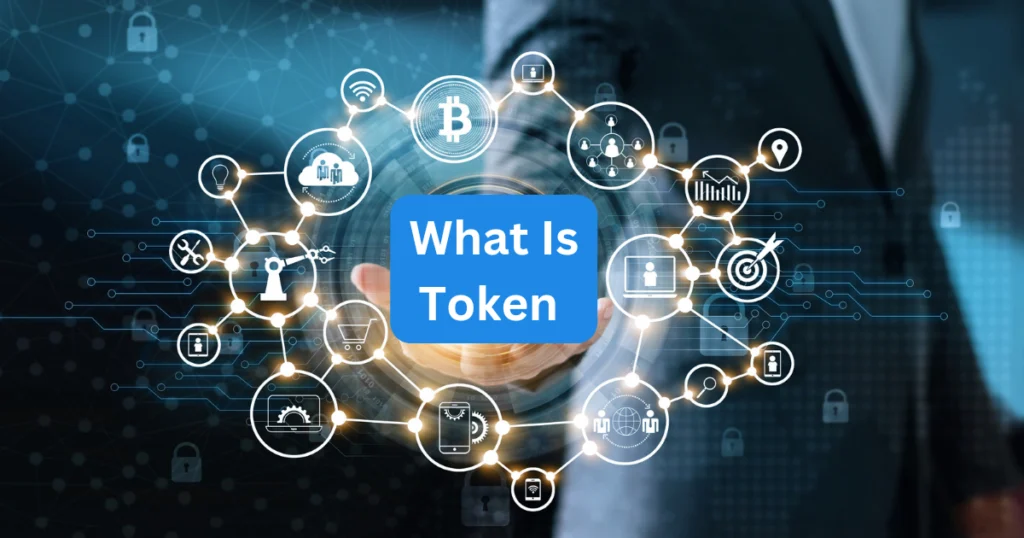In the world of blockchain and cryptocurrency, tokens have become a buzzword. However, many people still confuse tokens with cryptocurrencies, assuming that they are one and the same. In this article, we will explain what tokens are, how they differ from cryptocurrencies, how they work, their history, and how they are generated.
What Is a Token?
A token is a digital asset that is created and managed on a blockchain platform. Tokens are similar to cryptocurrencies, but they have different functionalities. Tokens are often used as a representation of a particular asset or utility, such as loyalty points, tickets, and other virtual items. They can also be used to represent ownership or access rights to a particular asset, such as shares in a company or access to a specific service.
The main difference between tokens and cryptocurrencies is that tokens are created and managed on top of an existing blockchain platform, while cryptocurrencies have their own independent blockchain. Tokens are built using smart contracts, which are self-executing computer programs that automatically execute the terms of an agreement between parties. These smart contracts are executed on the blockchain, ensuring transparency and security.
How Tokens Work
Tokens are created through a process called tokenization, which involves converting a physical asset or a service into a digital token. The process of tokenization involves creating a smart contract that defines the rules and properties of the token. The smart contract is then deployed on the blockchain, creating a unique token that represents the asset or service.
Tokens can be transferred between parties, just like cryptocurrencies. When a token is transferred, the ownership of the asset or service represented by the token is also transferred. Tokens can also be used to execute smart contracts, which allows for the creation of decentralized applications (dApps) on top of the blockchain.
Types of Tokens
There are several types of tokens, each with its own unique properties and functionalities. The most common types of tokens are:
- Utility Tokens: These tokens are used to access or use a particular service or platform. For example, the Basic Attention Token (BAT) is a utility token used to access the Brave browser\’s advertising platform.
- Security Tokens: These tokens represent ownership or equity in a particular asset, such as a company or real estate. Security tokens are regulated by financial authorities and must comply with securities laws.
- Non-Fungible Tokens (NFTs): These tokens represent unique and non-interchangeable assets, such as digital art or collectibles. NFTs have gained popularity in recent years, with several high-profile sales reaching millions of dollars.
- Stablecoins: These tokens are designed to maintain a stable value, often pegged to a fiat currency such as the US dollar. Stablecoins are used to reduce the volatility of cryptocurrencies and facilitate transactions.
History of Tokens
The concept of tokens dates back to the early days of the internet, where digital tokens were used to represent virtual goods and services. However, the idea of using tokens on a blockchain platform was first introduced by the Ethereum network, which introduced the ERC-20 token standard in 2015.
The ERC-20 standard allowed for the creation of fungible tokens on the Ethereum blockchain, which paved the way for the development of decentralized applications (dApps) and Initial Coin Offerings (ICOs). ICOs were a popular fundraising method in the early days of blockchain, where companies would sell tokens to investors in exchange for funding.
However, ICOs came under scrutiny from financial regulators due to concerns over fraud and lack of investor protection. This led to the development of Security Token Offerings (STOs), which are regulated by financial authorities and comply with securities laws.
In recent years, NFTs have gained popularity, with several high-profile sales reaching millions of dollars. NFTs are unique and non-interchangeable assets that are represented by a digital token on a blockchain platform.
How Many Tokens Are There in the World?
There are thousands of tokens in the world, with new tokens being created every day. According to CoinMarketCap, there are over 11,000 cryptocurrencies and tokens currently in circulation, with a total market capitalization of over $2 trillion.
The majority of these tokens are built on the Ethereum blockchain, with the ERC-20 token standard being the most popular. Other blockchain platforms, such as Binance Smart Chain, Solana, and Cardano, have also gained popularity for token creation.
How Tokens Are Generated
Tokens are generated through a process called token minting, which involves creating a new token and adding it to the blockchain. Token minting is done through a smart contract, which defines the properties and functionalities of the token.
Token minting can be done in several ways, depending on the type of token and the blockchain platform used. For example, ERC-20 tokens are minted through a smart contract on the Ethereum blockchain, while BEP-20 tokens are minted on the Binance Smart Chain.
Future Of Tokens
The future of tokens is a topic of much speculation in the blockchain and cryptocurrency industry. As the technology evolves and new use cases emerge, the role of tokens is likely to continue to expand.
One potential area of growth for tokens is in the field of decentralized finance (DeFi). DeFi refers to a set of financial applications built on top of blockchain technology that enable users to access financial services in a decentralized and permissionless manner.
Tokens are a key component of many DeFi applications, providing liquidity, collateral, and governance rights. As the DeFi ecosystem continues to grow, we can expect to see new types of tokens emerge that are specifically designed for DeFi use cases.
Another area of growth for tokens is in the field of non-fungible tokens (NFTs). NFTs are unique digital assets that are represented by a token on a blockchain platform. They have gained popularity in recent years, with several high-profile sales reaching millions of dollars.
NFTs have a wide range of use cases, including digital art, gaming assets, and collectibles. As more industries begin to explore the potential of NFTs, we can expect to see new types of tokens emerge that are specifically designed for NFT use cases.
Stablecoins are another area where we can expect to see growth in the future. Stablecoins are tokens that are designed to maintain a stable value, typically by being pegged to a fiat currency or commodity.
Stablecoins have become an important part of the cryptocurrency ecosystem, providing a way for users to transact in cryptocurrencies without being exposed to the volatility of the underlying asset. As the adoption of cryptocurrencies continues to grow, we can expect to see stablecoins become even more important.
Finally, the development of new blockchain platforms is likely to lead to new types of tokens and use cases. As blockchain technology continues to evolve, we can expect to see new platforms emerge that offer different features and functionalities.
These new platforms will likely lead to the development of new types of tokens that are specifically designed for the unique features of the platform. For example, the development of the Solana blockchain platform has led to the creation of new types of tokens that are designed to take advantage of Solana\’s high throughput and low transaction fees.
Conclusion
Tokens have become an essential part of the blockchain and cryptocurrency ecosystem, providing a way to represent assets and services in a digital form. Tokens differ from cryptocurrencies in that they are created and managed on top of an existing blockchain platform, using smart contracts to execute transactions.
There are several types of tokens, including utility tokens, security tokens, NFTs, and stablecoins, each with its own unique properties and functionalities. The history of tokens dates back to the early days of the internet, but the concept of using tokens on a blockchain platform was first introduced by the Ethereum network.
There are thousands of tokens in circulation, with new tokens being created every day. Tokens are generated through a process called token minting, which involves creating a new token and adding it to the blockchain through a smart contract.
Overall, tokens have opened up new possibilities for decentralized applications, fundraising, and asset representation on the blockchain. As the blockchain and cryptocurrency ecosystem continues to evolve, we can expect to see new types of tokens and use cases emerge.


